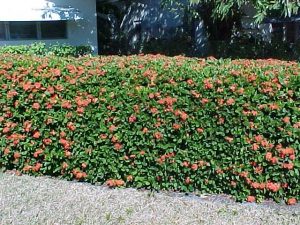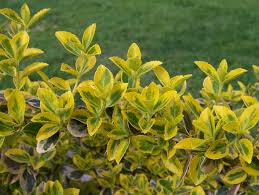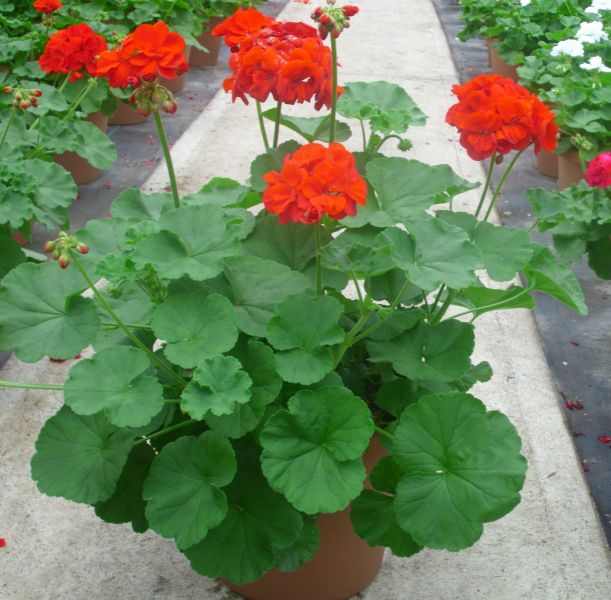 Spring weather has returned in all its mountain glory and we gardeners are back to the great out-of-doors! Besides “working in the dirt”, there are the pleasures of outdoor living. It’s interesting that enjoyment of “wide-open” vistas from our patios and decks can be enhanced by a certain degree of privacy. If your landscape needs a privacy screen, this might be your year to get one started.
Spring weather has returned in all its mountain glory and we gardeners are back to the great out-of-doors! Besides “working in the dirt”, there are the pleasures of outdoor living. It’s interesting that enjoyment of “wide-open” vistas from our patios and decks can be enhanced by a certain degree of privacy. If your landscape needs a privacy screen, this might be your year to get one started.
An unfortunate mistake many a homeowner makes is to plant a hedge that becomes massive within several years, overgrowing its space, obscuring walkways and even the entire front of the house. Also, contrary to their purpose, screens taller than head high planted in the wrong place can obliterate vistas and obscure sunsets.
Today’s column is dedicated to those plants that are easily maintained at head height, mostly with a minimum amount of manicuring. Because our arid Arizona climate causes plants to grow on the small side of their potentials, spacing is critical for a fast filling hedge. For a substantial hedge, if the plant tag says your plant will grow 4-5 feet wide use the smaller of the two spacing numbers recommended. For complete privacy space this example at four-foot centers to ensure a thick hedge.
Here is my list of the top seven performers that can grow into exceptional hedges in local landscapes.
1. Red Tip Photinia is the most common plant used as a tall hedge, even though this 12-foot high evergreen requires a bit more maintenance than other plants on this list. If left untended for very long a ladder may be required to prune this hedge. This plant’s new spring growth emerges red then matures to a waxy green leaf.
2. Glossy Privet has the same look as the photinia but may be a better choice for a residential landscape. Growing to only six feet high, it forms a thick dark green hedge. The waxy leaves retain moisture within the plant’s structure so that the result is a lower maintenance hedge with lower water needs, and fewer bug problems than its red-tipped counterpart.
 3. Golden Euonymous is the most popular of the hedge plants. Although its year-round bright gold foliage appears almost festive, this plant is tough as they come. An ideal hedge, it can be sheared or left to grow into a natural form dense enough to make a good visual and sound barrier. Look to the Silver King euonymus for the same design elements but in a silver cream color that is equally striking. For long hedgerows, a combination of the two varieties creates a more interesting entity.
3. Golden Euonymous is the most popular of the hedge plants. Although its year-round bright gold foliage appears almost festive, this plant is tough as they come. An ideal hedge, it can be sheared or left to grow into a natural form dense enough to make a good visual and sound barrier. Look to the Silver King euonymus for the same design elements but in a silver cream color that is equally striking. For long hedgerows, a combination of the two varieties creates a more interesting entity.
Many folks want hedges with little to no maintenance and the lowest water usage possible. Here follow my suggestions for native and/or extremely drought-hardy hedges.
4. Gilt Edge Silver Berry is a new hedge plant with a native twist that rivals the manzanita. Bright gold edges highlight each bright blue leaf for a truly striking hedge. Planted at four-foot intervals it will grow into a head high privacy screen so thick that trespassers wouldn’t even try to penetrate it. Investment property owners use this plant because it classes up a property’s value but is hardy enough to withstand damage from the most abusive tenant.
5. Mint Julep Juniper is the super hardy plant your grandfather used as a hedge, but with a more attractive color. The signature sea foam green foliage grows quickly to head high with little help and even less water. It forms a very thick hedge that requires infrequent trimming to keep it perfectly manicured. As northern Arizona is famous for its junipers, a juniper hedge blends right into the landscape.
6. Oregon Grape Holly has several varieties that grow wild in the mountains of Arizona. With minimal domesticating care it quickly can be grown to a height of six feet. Once up to size this hedge can be cut off from all care except for very infrequent watering during the heat of summer. Lemon-colored flowers cover this plant in spring followed by a grape-like berry that birds really enjoy. The leaves resemble English holly, but are well adapted to our wind and bright sun.
7. Pinyon Pine – The last plant on this near-xeric list grows wild throughout Northern Arizona. The branches spread and then sweep upward to create a bushy, rounded evergreen with short blue – green needles. Locally preferred for screening and as an accent tree where more character is needed, it is a popular choice for planting in small spaces. It readily tolerates poor soil, hot and sunny areas, as well as harsh dry weather conditions. Commonly known as pine nuts, the edible seeds of the pinyon’s cones are considered a delicacy.
~~ ~~ ~~ ~~ ~~ ~~ ~~
 Plant of the Week is not a screen, but the fabulously colored Patriot Red Geranium. It’s desired for the extraordinary contrast of brilliant, large red blossoms that rise above its scalloped forest green leaves. The bold flower balls of scented blooms last most of the year, making it excellent for cutting and bringing indoors. Plant it outdoors in spring, singly or in masses, to bring life to winter dispirited, lack-luster container gardens and raised beds. With a little bit of energy a gardener can encourage this eye-catching plant to deliver an entire season’s worth of enjoyment.
Plant of the Week is not a screen, but the fabulously colored Patriot Red Geranium. It’s desired for the extraordinary contrast of brilliant, large red blossoms that rise above its scalloped forest green leaves. The bold flower balls of scented blooms last most of the year, making it excellent for cutting and bringing indoors. Plant it outdoors in spring, singly or in masses, to bring life to winter dispirited, lack-luster container gardens and raised beds. With a little bit of energy a gardener can encourage this eye-catching plant to deliver an entire season’s worth of enjoyment.
Until next week, I’ll see you in the garden center.


Thank you so much for this article, I will be buying several of these for my yard. However, my main problem is that I live in a very windy area and need to plant a windbreak of something fast growing, but I’m not sure how high it needs to be?
I really appreciate your advice
Michele
Great article on hedges. We are recent transplants from Alaska, and strange as it may seem think of two hedges that we think shoudld go well here but we have never seen or heard about. Cotoneyaster, and Siberian Pea. Cotoney aster has nice flowers and durable red berries and seems to take care of itself pretty much. Siberian Pea has nice yellow flowers in the spring. It has long thich thorns hidden in the folage so nobody will try a shortcut through your hedge twice. also, we lost two fine ash trees to Ash Decline replaced by diffrent choices at
Watters) they stood on both sides of a larger ash that seemed unaffected (We will see what this your brings) Acomment on Ash decline would be interesting. Thanks